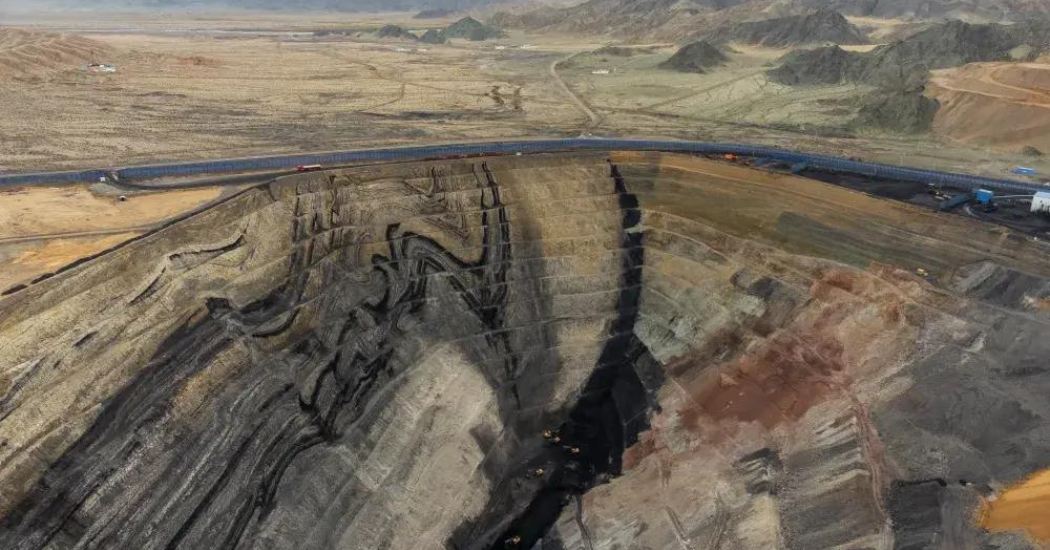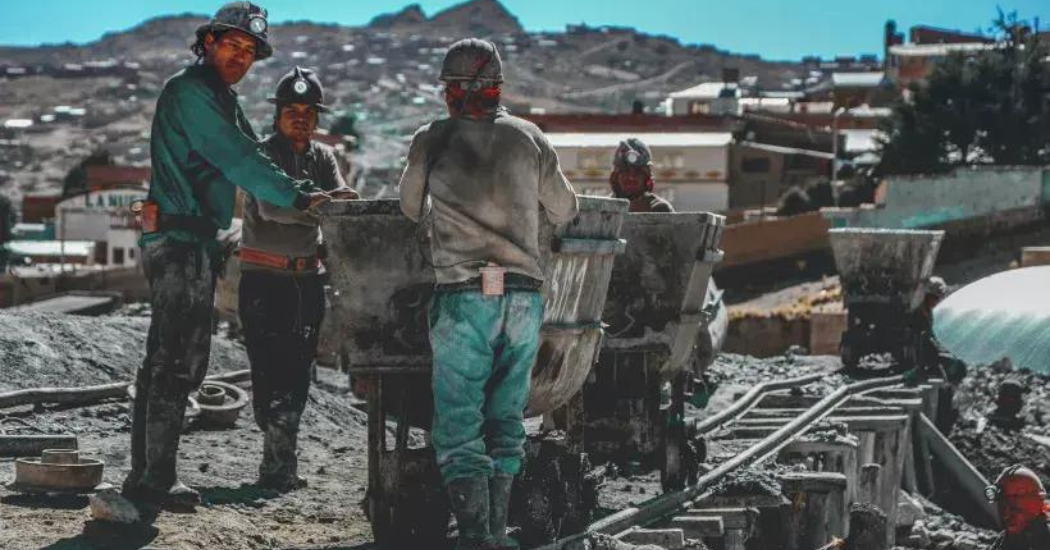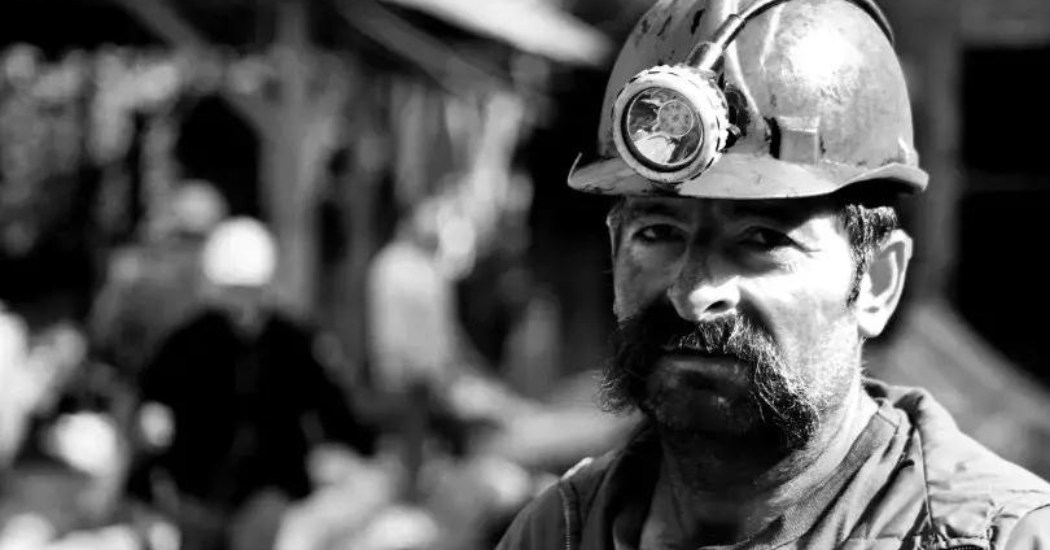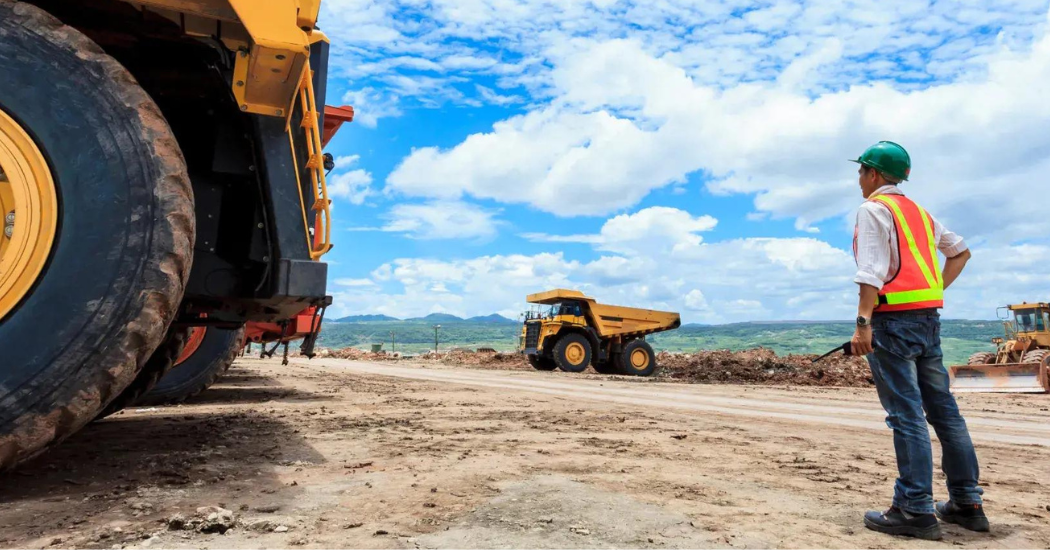Fortunately, significant efforts are underway to enhance sustainability at every stage of the mining process. Whether this is in the day-to-day operation of a mine, or on a wider social scale, companies are beginning to prioritize the needs of both mining communities and the planet.
Minimizing the environmental impacts
Above all, there is an increased emphasis on making sure that mining adopts a more sustainable approach at every stage of production. While, by its very nature, mining will always have some impact on the environment, more can be (and is being) done to reduce the toll taken on Mother Nature.
 Close down illegal mining operations
Close down illegal mining operations
Setting a strong precedent within the industry, the closing of any mines which fail to stick to regulations helps support environmental factors. Before 2010, most mines in China were unregulated when it came to the impact they were having on the wider world. The introduction of new legislation, coupled with the closing of mines that didn’t conform, has served as a breakthrough moment for protecting environmental rights in the country.
Reusing mining waste
The need to repurpose waste materials (what we’d refer to as recycling) is perhaps no more poignant than it is in the mining industry. Huge excesses of waste material are generated during all four types of mining projects. These materials can be used for a variety of productive measures, such as construction and infrastructure.
For example, recycling copper, which takes seven times less energy than processing ore, or steel, which uses three-and-a-half times less energy than ore, will serve to minimize a mine’s environmental impact, and keep it running for longer.
Use eco-friendly equipment
Advances in technology have meant that battery-powered mining equipment (which runs off of electric instead of diesel) are now a viable, greener alternative to traditional methods. Swedish mining equipment manufacturer Epiroc is even aiming to be 100% electric by the end of 2023.
Perhaps the easiest switch for organizations would be to turn to more durable equipment. Less frequent turnover reduces the need to manufacture more equipment (which can have a high carbon cost).
Make sure toxic waste is counted properly
Companies have historically been hesitant to fully address the amount of toxic waste which their sites produce. While this is sometimes unavoidable in in-situ mining, it’s important that accurate figures are given in order to account for the safe removal of the waste in question. Inaccurate numbers could allow companies to illegally dump toxic residue, which can be damaging to both wildlife and local communities.
Replenishing the environment
A simple but effective measure, replenishing the natural environment after the closing of a mine will go a long way to protecting the environment. This can be achieved by removing excess waste (safely), replacing native soil and grass, and planting trees to help rejuvenate the local ecosystem. This should be carried out alongside a full site inspection, to ensure the right materials are being used or removed.
Safely closing down and reclaiming mine sites
Rather than just abandoning it to rot, a mine should be closed (or reclaimed) in a safe, thorough, and ethical manner. Outside contractors should be hired to do this effectively, with equipment and parts removed safely, pipelines drained, and waste material repurposed or disposed of properly. Most importantly, any shafts should be closed up, and the land surrounding the mine returned to how it was prior to the project.
Promoting ethical working conditions
Regardless of any predisposition about mining, the miners themselves are normally hard-working laborers, looking to make a living wage. It’s imperative that health and safety, as well as other ethical concerns, are addressed as part of any mining project.
There are a number of ways that working conditions can be hazardous to the average miner, including things like:
Exposure to chemicals
Polymeric chemicals are commonplace in mining. Workers are regularly exposed to these, as well as other potentially hazardous substances, across the course of a normal day. And while PPE can help prevent skin or organ damage, it only goes so far.
Hearing loss
Drilling, explosions, and loud noises from heavy machinery can all result in moderate to severe hearing loss for workers. Tinnitus is also a potential threat – which leaves someone with a constant ringing in their ears.
 Injury from heavy machinery and explosives
Injury from heavy machinery and explosives
When large machines are in operation in relatively tight quarters, it greatly enhances the risk of an injury. Similarly, the use of explosives around so many workers can also lead to accidents. In some instances, this could be as a result of incorrect storage, while in others it might be because an untrained miner has been tasked with detonating them.
Occupational diseases
Airborne diseases are common in underground areas, with diesel exhaust, silica, and even asbestos all having the potential to cause long-term issues, such as cancer. Viruses like Ebole can also spread quickly in such a confined environment.
Cave-ins and collapses
Perhaps most miners’ greatest fear, improper planning can sometimes lead to caves collapsing in on themselves. This can leave miners trapped, or even crushed to death.
It’s vital that workers are provided with the right equipment and working conditions to do their job safely. Here are some steps which mining corporations can, and should, take to ensure their workforce remains safe at all times:
Improve visibility in mines
Mistakes are more commonplace in areas with low visibility. That’s true in any profession, but, for miners, the naturally dim conditions make it far more of a reality. Light sources should be in abundance in every tunnel of a mine, while headlights should be included on all machinery, as well as hard hats.
Ventilate any harmful gases
Ventilation systems need to be working at optimal level to ensure that any potentially toxic vapours are diverted away and out of the mine (to a safe location). It’s also important to watch for the signs of a potential gas leak. While the days of using a canary are long gone, companies can still monitor this quite easily with specialist technology.
Ensure equipment is kept in good condition
Old, worn-out, and defective parts and pieces of machinery can cause accidents. Cleaning, repair, maintenance, and regular inspections are the best way to ensure that the chances of something going wrong are significantly decreased. Excavators, drill rigs, rock dusters and ventilation devices will all need to receive a thorough service on a regular basis.
Manage vibration and noise levels
Reducing both hearing loss and the chance of a cave-in, the appropriate management of noise and vibration can save lives. Inserting buffer holes in advance, using millisecond blasting, and introducing blast mats to absorb the force of an explosion can all have a positive impact.
Watch for dust hazards
Loose silica dust or coal particles can damage the lungs, and are common in mines. Vacuums, screens, and wet fan scrubbers are able to catch these before they can cause any real damage.
Ensure rigorous standards are maintained
Perhaps most importantly of all, the best way to ensure the safety of a workforce is to guarantee that all regulations are strictly adhered to. Allowing rules to be bent or broken can result in harm coming to a miner, and should be reported immediately if spotted.
Account for extreme temperatures
Mines can operate across a wide spectrum of extreme temperatures. Gold, diamond, and other precious metals will often require sub-zero conditions, while mines found deeper to the Earth’s core will be incredibly hot. This can weaken a worker, lead to dizziness and confusion, and even cause heat exhaustion.
Hydration stations need to be available throughout mines, while there also needs to be time allotted to regular breaks. The appropriate coverings also need to be provided to all miners.
Protecting the mining community
Small communities can benefit greatly from the presence of a mine. It provides employment opportunities, brings footfall to any stores in the town, and will usually result in some form of financial infusion into the area, and wider country itself.
However, the presence of a mine can also pose health risks, as well as raising debates about the impact it will have on the community as a whole. Mining operations have a negative impact on cultural and heritage sites, as well as marginalised groups, such as indigenous peoples.
As such, it’s important to ensure that the right measures are being taken to protect these small towns and villages, in order for them to remain healthy and happy. Some steps which companies could take include:
Ensuring communities are given a voice at the appropriate points
While the opinions of a community should ideally be listened to at any point in the lifecycle of a mine, there are specific times at which their voice has more influence. Laws and regulations exist to provide the consent of local communities. The most impactful periods for community engagement are during the consultation (planning) and closing (reclamation) periods.
Ensuring there are grievance mechanisms in place
A business is bound by The UN Guiding Principles on Business and Human Rights to address grievances and work to find a viable solution. There needs to be an official channel through which communities and individuals are given a voice to air complaints, with tangible evidence that they’ve been listened to.
 Mitigating any potential diseases and outbreaks
Mitigating any potential diseases and outbreaks
As we’ve discussed, mines lend themselves to the outbreak of disease. And while a company is required to do what they can to protect their workers, this doesn’t always extend to the wider community. As such, it’s the duty of a mining company to work with local health authorities to deliver preventative and treatment programs for diseases such as malaria, HIV/AIDS, and TB.
Providing the community with detailed information
In order for the community’s engagement to be as valuable (and beneficial to them) as possible, mining companies need to make sure they provide open access to all relevant information. This gives more power to the residents, and helps them understand both the potential pros and cons of a mine being introduced in their area.
Managing mine closures appropriately
Closing mines can have a series of knock-on effects for communities. Examples include creating environmental biohazards, serving as a source of social conflict, leaving communities in a state of recession as a result of a loss of jobs, and draining public resources (in the case of abandoned mines). It’s important that mines work with local governments to reclaim an area safely and ethically.
 Pumping money into health systems in poorer nations.
Pumping money into health systems in poorer nations.
Mining companies can work with local health authorities to contribute and support healthcare systems in more impoverished nations. This collaborative approach to healthcare would ensure communities are given the much-needed infusion of cash they need to protect citizens against threats like Ebola and Tuberculosis – which are often common in poorer mining communities.
Guaranteeing money is going to the right sources.
It’s vital that finances can be monitored and tracked throughout the entire lifespan of a mine. Money needs to be going to the right channels, to ensure corruption isn’t present at any point of the project’s life cycle.
Advocating sustainable resource management
We all have a duty of care to work in a sustainable and ethical manner. That extends to any industry, but is perhaps most at the forefront in a sector like mining. Mitigating excess waste of core resources should be a priority for any project. And while we’ve already looked at what can be done to heighten these efforts, a mining corporation has a responsibility to promote and advocate for what can and will be done to meet these sustainability standards.
Some of the most effective ways to do this include:
Educating the wider world
It’s important for the struggles which communities, the environment and workers face to be made widespread. Raise awareness of the issues faced in regards to any of these factors, and show the benefits of how combating them will have a positive impact. Educating people about the environmental, social, and economic aspects of sustainability gives others the chance to have a say, and maybe even change things for the better.
Engaging with stakeholders
Stakeholders in any business have a lot of sway. Understand their perspective on a situation, then engage with them to work on possible solutions. By involving them in the decision-making process, you’ll gain their trust. It’s important to work with them to introduce and promote new sustainable approaches.
Finding innovative solutions
New products, services, processes, technologies, business models, or partnerships are all a great way to combat sustainability issues found at the core of any business. Adapting to new ways of working sets an example, and can help to drive positive change at every level of the totem pole.
Collaborating with others
Working with other people who share a sustainable vision (be it at your company, in your industry, or even beyond the mining sector as a whole) can be hugely influential. Teaming with others allows a company to share information, knowledge, ideas, and best practices.
Read more about Socially Responsible Mining
Originally Published on Atkinsons Bullion




